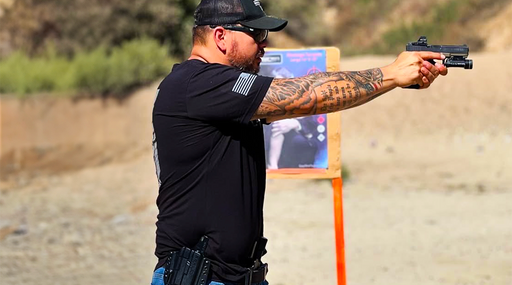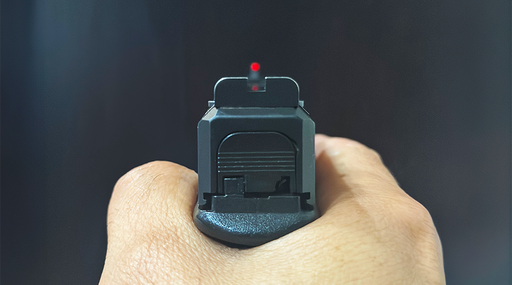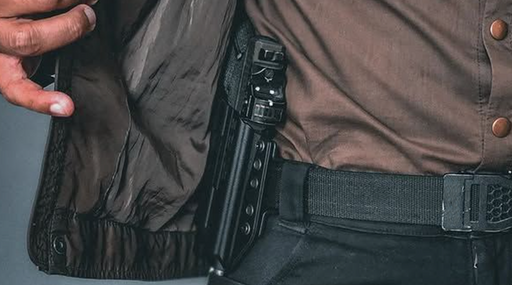
The adage that an ounce of prevention is worth a pound of cure is true in spades where the safety of your home is concerned. Theft is among the most common of property crimes, along with wanton damage like graffiti. Usually, theft is committed by burglary, meaning items are stolen from the property when the rightful occupant is not present. Home invasions and armed robberies also occur, but are thankfully less common. These crimes entail the occupant being present when the crime begins.
The most common motive for these crimes is obtaining goods which can be sold or bartered for drugs. When the crime involves simple damage to property, the motive might be simply the result of boredom or, more ominous, the marking of territory or attempts to prove loyalty to a criminal gang. Regardless, there is much a homeowner can do to prevent and curtail these crimes, which can take a toll on the enjoyment of one’s property and its resale value if ignored.
Readily available today is a wealth of first-person interviews of property crime instigators. Common statements from the perpetrators reveal relatively simple methods to make your home less likely as a target for burglars and vandals. Here we’ll cover insights from those interviews, with the goal of helping you set priorities or make changes to improve the security of your home.
Locks work, if you use them.

Thieves are opportunistic feeders who, like any investor, want a high return and low risk. The habit of locking your car when you’re away from it is the easiest insurance that exists, and it’s free. There is no excuse for not keeping your vehicle locked. There is no failsafe system and yes, there are methods for defeating the best locks, but by locking your car you raise the price of entry such that the vast majority of burglars will pass it up in favor of easier pickings.
The same applies to the windows and doors of your home, especially when no one is present. Of course, the desire or need for fresh air is legitimate at times. Screen doors and windows are easy to fit with decorative bells, such as those often seen on the collar of a pet cat. Hang the bells or chimes such that any movement of the door hinge makes them ring. Of course, this strategy is dependent on there not being loud ambient noise in the home, but it does work for the purpose of alerting occupants to activity at the door. Simply locking a screen door is of course advisable, but it’s very easy to put a fist or knife through a screen silently to operate the lock while standing outside. Audible signals are usually not expected by intruders and can be placed out of sight so as not to be defeated before entry. As for windows, be sure they’re locked before departing your home. Sliding glass doors should have a broomstick placed in the track so as to prevent opening the door without its removal, a task easily done from the inside.
Use deadbolt locks, not doorknob locks, on exterior doors. A short tutorial from YouTube and a little practice allows pretty much any somewhat motivated person the skills to defeat a doorknob lock. But deadbolts require heavier tools and hard work. Just like locking your car, using deadbolt locks dramatically decreases the percentage of the criminal element that’s willing to put the work in to victimize you.
Call your local arborist?
Features of the home’s exterior, whether subtly or purposely put there for burglary prevention, can make a difference, but are not without complicated considerations in some instances. Such features may be decorative or imposing in appearance. Each comes with pros and cons.
Vegetation can work for or against the homeowner or tenant. Thick shrubs or trees surrounding the property can provide a thief a visual shield, though their advantages for privacy and noise reduction are significant. Planting cacti or prickly shrubs under windows is nearly guaranteed prevention of burglary from that window, but makes that window difficult to access for painting.
Picture a property crime

Cameras are often relied upon as a deterrent. Interviews with professional burglars indicate that the presence of a camera isn’t very effective by itself. Many opt for unremarkable clothing or masks to conceal identity. Aside from collecting damning evidence like a license plate or vehicle with distinctive dents, the data a camera yields often fails to clear the reasonable doubt standard required in court. Cameras should be thought of as a crime-solving, not a crime prevention tool, as they can accumulate evidence in a community where detective departments are capable and active in collating and sharing information—a process that television shows portray as more common than it actually is, particularly for non-violent crime.
Technology-enhanced cameras are credited with solving or preventing a greater number of crimes. Cameras that work with an app, with the Ring brand being best known, provide the capability of verbal communication between the homeowner and someone at the door and a generally offer high-quality images with cloud-based storage. Most offer real-time notifications of activity, allowing the homeowner to summon law enforcement or a contracted private security provider—neither of which is likely to arrive in the time of less than two minutes the average burglary takes to commit. People concerned about privacy have legitimately questioned these systems, however. Every cloud-based system will sooner or later be hacked. Remember that every bit of data the system collects, including information about where the lawful actors were at any given time, becomes a permanent record that could be used to their detriment later in a myriad of ways. That sort of activity is beyond the scope of this discussion.
What’s that sound? Hey, stop!
Along with cameras, audible alarms are a popular choice. Popular doesn’t mean effective. Alarms generally sound audibly on location while simultaneously alerting the local emergency dispatch or private security switchboard. What they can do reliably is contribute to evidence regarding when a crime happened. However, given that most home burglaries happen in less time than it takes to dispatch an officer, their contribution to prevention or catching a crime in progress is minimal. It doesn’t help that car alarms have contributed to currying a hands-off attitude among the general public. Most people know that a car alarm sounding off is usually just the result of leaning into one’s pocket the wrong way. Likewise, most audible home alarm events are caused by storms or nosy wildlife disturbing wires. If you like the idea of an audible alarm, great, but understand its limitations. One security company I know operates audible alarm and camera systems in a community that’s largely built up with vacation homes that stay vacant for weeks on end. In that sort of homeowning situation, it makes sense to have small potential problems investigated before they become big ones.
See the light
Indoor and outdoor lighting, like cameras, is another resource that should be taken not as a measure by itself, but considered as part of an overall property security plan. Its deterrent effect is limited by things like geographic isolation and predictable patterns of the absence of responsible people and potential witnesses.
Working cameras and consistent but erratically timed patrols or visits by responsible parties make a great combination with outdoor lighting. Areas with regular foot traffic/patrols can benefit from lighting that is dimmer and yellowish in comparison to bright white flood lamps. Bright white floodlights creates blind spots in human vision, offering open-space concealment for anyone in the bright-light area of the lot. Yet these lights provide better results for most security cameras in terms of color accuracy and specific features of cars or people. Pick outdoor lights according to whether you rely primarily on a human patrol or camera monitor is more important.
Indoor lighting is frequently used by homeowners to feign occupancy of a vacant house. If this is to be effective, lights should be on timers and change occasionally. For most locations, this strategy should be low-priority in favor of measures taken to prevent undesired entry during daylight hours. While most violent crime happens after dark, most home burglars act in the mid-afternoon when the average worker is at the office.
The somewhat unexpected fact that most burglaries happen in daylight hours leads to a consideration often cited by professional thieves. Entryway lights burning during the day is an indicator that no one’s home. Many jailed pros cite this as a selection factor. Especially during winter, many people leave for work or arrive home in darkness. Consider installing a timer on that porch switch or carrying a small flashlight that’s bright enough to light your walkway to eliminate this bit of burglar bait.
Automatic garage doors—too much convenience?
It’s a story I’ve heard too often from urban students hailing from a crime-plagued city of my home state. The homeowner arrives home from work and pulls into the garage, having used an electric door opener. As the garage door is closing and the homeowner exits the car, two uninvited guests dart inside. It’s a bold move that shows a high degree of willingness to do bodily harm on the way to get car keys, a wallet, or whatever they please inside the home.
Returning to the home garage is a high-risk moment of the day, so situational awareness during this time needs to be high priority. Moving to old-school garage door opening may be an option—a robber wants to face you when you’re trapped, not in the wide open street or yard. While we feel safe and sheltered in our cars, it is an utterly false sense of security. Car doors and windows do not stop bullets. Being seated, especially in a car that puts your body lower than someone standing outside, is a massive vulnerability. Consider your vehicle one big coffin on wheels and treat this moment of the day accordingly. Stay off the phone. Pay attention to your surroundings. Have immediate access to your firearm, and until the garage door is completely shut, keep your hands free to draw and/or fight. If for some reason you’re not armed with a gun, have an alternate force tool like pepper spray or a golf club in hand as you exit the car. Garages are usually full of great improvisational weapons like rakes and shovels. Store at least one in easy reach in the event you must defend yourself as you step out of the car. By the same token, consider not storing such items just inside the door where a someone of ill intent can easily grab one.
A gun represents the best force multiplier in this or any instance in which there is more than one bad actor. Street criminals nearly always part ways with their friends, fleeing with great fervor when a would-be victim’s gun is pointed at their accomplice. Especially if your physical stature is less imposing than, say, Dwayne “The Rock” Johnson’s, taking on such invaders with less-than-lethal force tilts the odds in their favor, while being inattentive is basically tossing the dice. Luck favors the prepared.
Anything but routine
Routine is a way of life for some people, and a source of psychological comfort. However, publicly visible routines provide a veritable invitation to unwanted intruders who naturally will implement their criminal act when the homeowner is away.
If a potential burglar or, worse yet, mugger is organized enough to “case” your residence or any part of your life, which is to say, to study its vulnerabilities and make the job of stealing easier, then routine is not your friend. The unfortunate truth is that the intended victim rarely knows when “casing” is underway, unless the would-be thief is a former business or romantic partner.
Varying your routine to the extent possible is thus good prevention. Consider entering your home through different doors when you come home. Don’t leave the same light on in your absence. If it’s possible to randomize your schedule of absences, do that.
Saving the best for last: WOOF!
There is a single deterrent that nearly all professional burglars avoid: a big dog. Whether this option brings joy or disdain to your heart, it’s the closest to being universally effective. Of course, dogs come with significant responsibilities and expenses, but for those who love them, the rewards are worth it. Keep in mind that a dog must stay contained on your property when it’s not being walked on a leash. The legal and financial woes and heartache that can ensue if a protective dog leaves the property on its own can be substantial. Aggression is less important than size when most burglars face a dog. Most of the interviewees state they’ll simply pass by a residence that has a large dog without testing whether the dog exhibits protective behavior. Dog lovers, this is a two-for-one! Companionship and protection in one furry package.
In conclusion

Know that property crime is quite common and will probably happen to you during your lifetime. Discovering a burglary can be upsetting, especially if you return to your home or vehicle to find it damaged by an unlawful entry method or that personal items have been rummaged through, or that a pet escaped the house or yard in the process. Do not search your home alone if you arrive to discover the door ajar or a window broken in an apparent unlawful entry. Call law enforcement and wait nearby. Chances are, the perpetrator left hours ago. Nevertheless, to search one’s home alone is folly, as is doing so without a background of training specific to this skill.
As with any good self-protection strategy, part of a property crime plan is to decide now that you will be emotionally resilient and will do what it takes to control the parts of your household or habits that may have contributed to the selection of your property. The word “empowerment” is tossed around a lot today. Creating a home security habit is a great way to empower yourself and contributing family members.





















Leave a comment